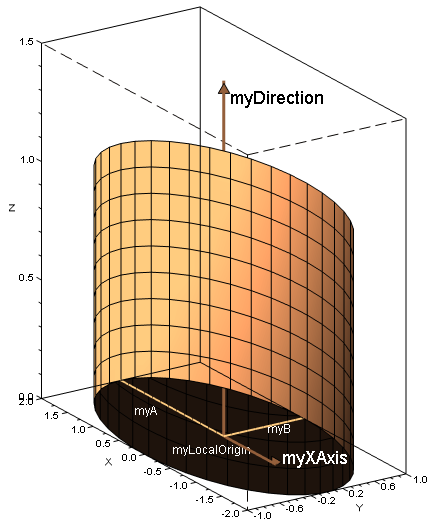User Manual 3.4.1 Infinite Elliptic Cylinder
Definition
An infinite elliptic cylinder is a quadric surface obtained by extending an ellipse about its normal axis; in other words, a cylinder with an elliptic base. Assuming the XYZ coordinate system is such that the cylinder is centered and axis-aligned, the cylinders equation is given by:
[math]\mathcal{C} = \left\{ (x, y, z) \in {R}^3 \middle/ {x^2 \over a^2} + {y^2 \over b^2} = 1 \right\}[/math]
Implementation
The Infinite Elliptic Cylinder object in the SIRIUS library implements the [MAT_GEO_InfiniteCylinderInterface infinite cylinder interface]. Please refer to the Javadoc for a complete list of public methods.
Instantiation
In order to instantiate an infinite elliptic cylinder object, the user must specify the cylinders' "center", its main axis, its axis along which semi axis is [math]a[/math] and both semi-axis. For example :
// Cylinders parameters Vector3D position = new Vector3D(1, 2, 3); Vector3D axis = new Vector3D(0, 1, 1); Vector3D axisU = new Vector3D(2,-1, 0); double a = 2.0; double b = 1.0; // The cylinder itself InfiniteEllipticCylinder myCylinder = new InfiniteEllipticCylinder(position, axis, axisU, a, b);
Usage
Please refer to the [MAT_GEO_Home#HInteractions Interactions with other geometrical objects section] for methods inherited from the Shape interface.
